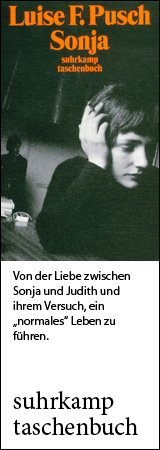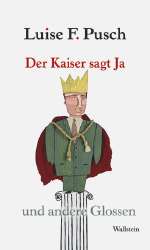
(Margaret Susan Cheshire, Baroness Ryder of Warsaw and Baroness Cheshire [real name])
born on July 3, 1924 in Leeds, Yorkshire/ England
died on November 2, 2000 in Bury St Edmunds, Suffolk/ England
British philanthropist
100th birthday on July 3, 2024
Biography
When the Second World War broke out in September 1939, Sue Ryder was 15 years old, and this dramatic event was to completely change her life. She immediately decided to leave the safe environment of the exclusive and private Benenden School and to serve in the medical corps of the British army as a volunteer. The schoolgirl — already an independent spirit — did not ask her parents for permission but claimed to be a year older in order to be accepted into service; four years would pass before she would see her parents again. She was to adhere consistently to that false date of birth for the rest of her life; her autobiography Child of My Love begins with the words “I was born on July 3, 1923.” The correct year of 1924 was recorded on her birth and death certificates.
Instead of work caring for the wounded in the medical corps, she was assigned administrative duties in the army’s highly secretive special operations unit for subversive warfare, the Special Operations Executive (SOE) in Poland. She also drove Polish agents in a truck to small airfields, from which they were then flown into German-occupied territories to carry out sabotage activities. Many of the men and women never returned from their missions. Sue Ryder was impressed both by the Poles' unbroken desire for freedom and by the strength of their convictions.
At the age of 18, she married a British naval officer, but he was killed in action only a few weeks after the wedding. She was then deployed by the SOE to North Africa and Italy.
After the war ended, Sue Ryder stayed and worked for several aid organizations in Europe; helping others was to become a lifelong commitment. She began by visiting prisons in France, but soon extended her activities to Germany. She travelled from one prison to the next, researching all the non-German prisoners in each one. In her autobiography, she describes how heartbreaking it was to find places such as Bergen-Belsen, Auschwitz, Ravensbrück, Stutthof and Theresienstadt listed on the forms under the heading “previous prisons.” Most of the prisoners were young, sick and came from eastern Europe. She decided to help; with the support of Scandinavian friends, she set up the first provisional convalescent home for concentration camp survivors and traumatized long-term patients in Denmark.
The Allies had called these people Displaced Persons (DPs), i.e. people who had been deported for forced labor during the war and who could no longer be repatriated either because they could not or would not return to their home countries.
In the early 1950s, she began setting up her own organization and — perhaps this was an inevitable event — met another humanitarian, Leonard Cheshire. Cheshire was a revered British war hero who had founded his own aid organization after experiencing the war as a bomber pilot. (Group Captain Leonard Cheshire was an official British observer of the atomic bombing of the Japanese city of Nagasaki by the American air force.) They soon became a couple and, after having both converted to the Roman Catholic faith, they were married on April 5, 1959. A son was born a year later and a daughter in 1962.
It was around then that the first large families from DP camps were able to move into specially built housing on the grounds of a villa in Großburgwedel, on the outskirts of Hanover.
Two previous attempts to found homes in the Frankfurt/Main area had failed and it was only after a long search that Sue Ryder found the villa — a large house with over 50 rooms that had been built as a sanatorium in 1900 — in Großburgwedel. It was ideal for her purposes; she began offering accommodation to DPs released from camps, prisons and hospitals. Many of them suffered from tuberculosis. With the help of the United Nations Association-UK and a specially founded association, the Sue Ryder Foundation was also able start on the construction of eight small houses in 1957. Volunteers from a total of 16 nations — mainly pupils and students — labored on the villa's extensive grounds for several years under the guidance of a master builder. They built the settlement, which was to remain the only one especially constructed for DPs in Germany, entirely without the help of machines. Sue Ryder, herself a devout Christian and philanthropist, chose to name it the St. Christopher Settlement. For the local residents of Großburgwedel it was simply “the Polish settlement.”
Starting in 1962, home after home was built in Great Britain and across eastern Europe. A network of Sue Ryder charity stores in Great Britain and Ireland provided and continues to provide regular income to this day.
Sue Ryder received numerous awards and honors throughout her life, both in her home country and in Poland. She was appointed an Officer of the Order of the British Empire (OBE) in 1957 for her charitable work in Germany. When she was ennobled by Queen Elizabeth II in 1979 for her worldwide services, she took the title Baroness Ryder of Warsaw as a way of expressing her great respect and deep admiration for the Polish people. With her elevation to the peerage, she also received a seat in the House of Lords of the British Parliament. She hesitated for a long time, but decided in the end to accept it as she viewed it as an excellent opportunity to stand up for the weakest members of society. A dozen honorary doctorates and other medals and knighthoods followed. In 1992, the year of her husband Leonhard's death, she was awarded the Officer’s Cross of the Order of Polonia Restituta, the second-highest civilian state award in the Republic of Poland.
Born into a wealthy and large family, Margaret Susan Ryder was not predestined to lead such a life. Her father Charles Foster Ryder was a widower with five children when he married Mabel Elizabeth Sims in 1911. The couple had four more children; Sue was their youngest child. She described her father as a quiet, well-read and reserved man who devoted all his time to the management of the estate with its landed properties in Yorkshire and East Anglia. Sue loved her father dearly, but it was her mother who had the greater influence on her and was her role model. Sue Ryder wrote in her autobiographies that her mother had many talents, a wide range of interests, and enjoyed hobbies such as painting and architecture. Yet it was her mother’s warmth and readiness to help others that Sue admired most. The family lived alternately in Great Thurlow and Scarcroft, in beautiful and spacious houses. Little Sue also encountered abject poverty within walking distance of their homes when she accompanied her mother during visits to children in the slums or in poorhouses. Mabel Ryder was very religious, and Sue also attended church with her.
Sue Ryder always remained true to herself. With great energy, an irrepressible will and trust in God, she helped countless people. “When the goal is clear, stay strong, don't give up and stay calm.” She gave this advice in 1957 to a young woman who came to Großburgwedel to help build the St. Christopher Settlement.
Sue Ryder died after a long illness on November 2, 2000 in Bury St Edmunds, Suffolk. She left behind not only that first settlement built in Großburgwedel, but an entire life's work of over 80 homes in 14 countries.
In 2023, the Sue Ryder Foundation in the UK celebrated its 70th anniversary.
(Text from 2015; translated with DeepL.com; edited by Ramona Fararo, 2024)
Please consult the German version for additional information (pictures, sources, videos, bibliography).
Author: Jürgen Zimmer
Quotes
Sue Ryder's biographer Mark Pottle recorded:
“On their return to Britain they lived in a small flat at Cavendish. A son and daughter were born in 1960 and 1962 but Ryder did not allow pregnancy to interrupt her work. She preferred action to delegation and was happiest when driving through the night to open a new home or deliver aid…. Small, thin, and neatly dressed, with characteristic headscarves, she seemed to have no interest in food… Her family background lent a grandeur to her manner that she never lost, in spite of the simplicity of her tastes and the frugality of her lifestyle. And behind the piety there was a lively character with a hint of flirtatiousness.”
“I admit that my example may have influenced other people, but I in turn learned from others who set an example. My other source of strength is my religion. It is everything to me. I believe that everything I do is guided by God,” Sue Ryder said in one of the many interviews she gave.
Shortly after becoming Lady Ryder in 1979, she responded to a reporter's question as to whether she would consider her elevation to the peerage a reward. “Reward? I am not looking for reward. Surely, in God's judgment, our reward is when we die. We are all pilgrims on this earth.” (The Telegraph, November 3, 2000, obituary of Lady Ryder.)
If you hold the rights to one or more of the images on this page and object to its/their appearance here, please contact Fembio.



